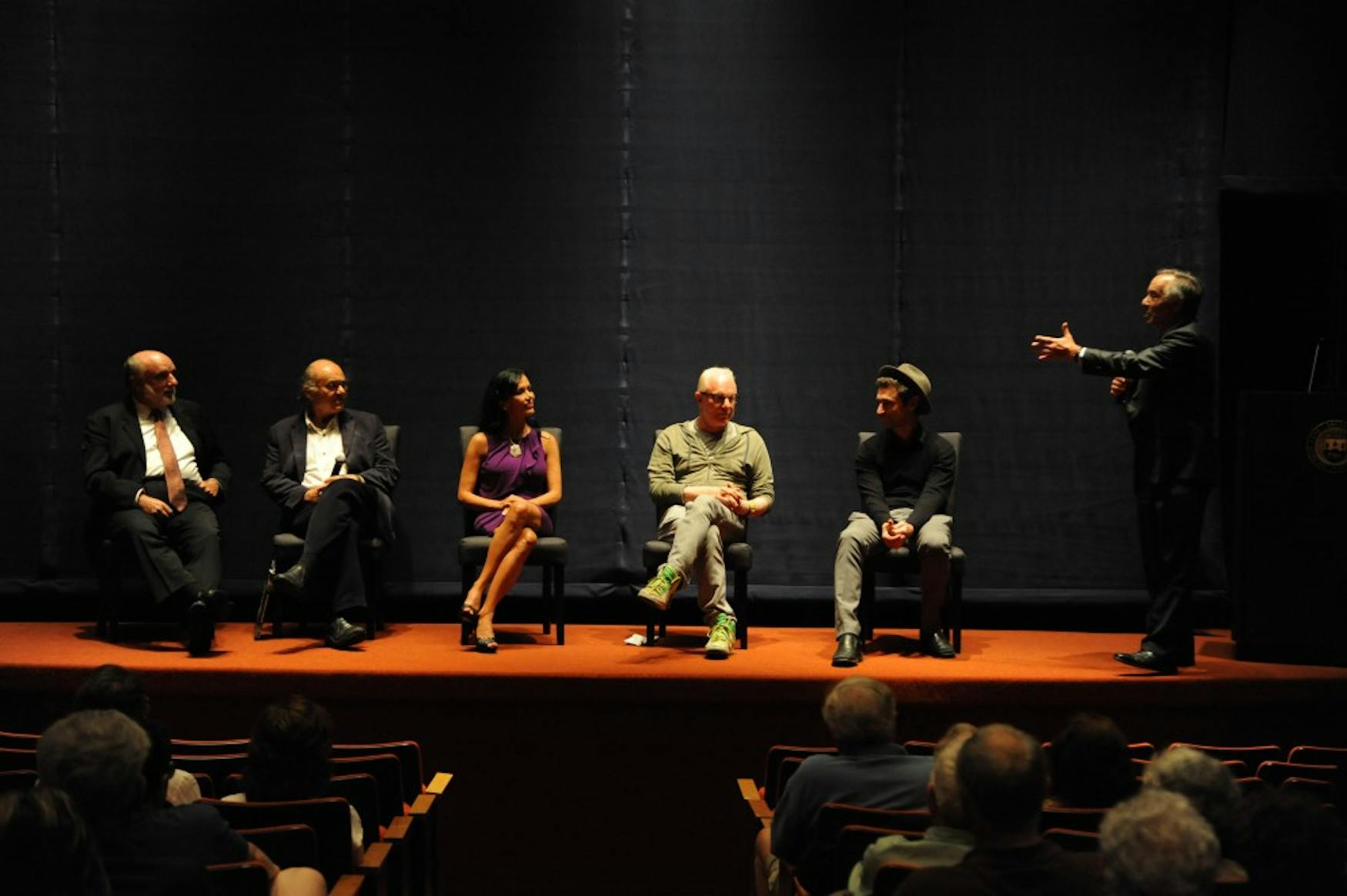Event explores Dome of the Rock conflict
The Wasserman Cinematheque screened the new documentary “One Rock, Three Religions”—about the conflict over the Dome of the Rock—on Thursday. A discussion on the film’s with the director, Isaac Hertz, and producer, Valentina Castellani Quinn, followed the showing.
The film, which was completed about a month ago, explores the controversy surrounding Jerusalem’s Dome of the Rock, a shrine built on the Temple Mount in the Old City and a religiously significant site for Muslims, Jews and Christians. Built in the seventh century by Islamic leaders, the Dome is currently maintained by the Ministry of Waqf, a Muslim -led group.
According to the Quran, the Dome of the Rock is significant to Muslims because it is believed to be the site from which the Prophet Muhammad ascended into heaven. Similarly, Jewish and Christian traditions maintain that the site is where Abraham, the first Jew, prepared to sacrifice his son Isaac. The Temple Mount is also where Solomon’s Temple—often called the “First Temple” in the Torah—stood before its destruction.
According to the film, currently, the Temple Mount is open to most visitors—regardless of religion—but non-Muslims are not allowed to enter the Dome of the Rock shrine. Additionally, Non-Muslim prayer on the site is outlawed by Israeli law as a security precaution, and visiting hours for non-Muslims are scheduled around Muslim prayers and holidays. These limitations have sparked episodes of violence since Israeli recaptured Jerusalem in 1967’s Six Day War, and the film used clips of police footage of riots and shootings that occurred on the Temple Mount, as well as footage of some of the suicide bombings that took place in Israel over the course of the early 2000s.
The film also includes interviews with and clips of footage of civilians, scholars and religious and political leaders discussing their opinions on the current policy on the Dome of the Rock and the relationship between the different religions and nationalities represented in the state of Israel. The featured speakers included Ron Prosor, Israel’s former ambassador to the United Nations, Charlie Hebdo journalist Patrick Pelloux and Pope Francis, head of the Catholic Church.
Dr. Maher Hathout, an American-Muslim community leader of Egyptian origin who was an outspoken advocate of interfaith peace, said in the film that he chooses to be optimistic that the three religious groups with ties to the Rock might coexist peacefully, as having a negative approach would ensure the failure of any peace initiatives. “Despair is worse than death, but hope is the prelude to life,” he said.
Alumnus Bobby Sager ’76, chairman of Polaroid’s Board of Directors and founder of the Youth Presidents’ Organization’s Presidents’ Action Net also spoke in the film. Sager, whose book “The Power of the Invisible Sun” was handed out at the door, discussed the role individuals play in working toward interfaith peace. These individuals’ actions, which he called “concrete baby steps,” will, in turn, foster a mentality of peace and tolerance, he said in the film.
Additionally, the film connected the religious conflict to the larger Israeli-Palestinian conflict, explaining how religious differences play a large role in the decades-long conflict between the two populations.
After the screening, Hertz, Quinn, Sager, Acting Director of the Schusterman Center for Israel Studies Rabbi David Ellenson and Prof. Kanan Makiya (IMES) took the stage for a brief discussion of the film and of Israeli-Palestinian relations. Makiya is the author of “The Rock,” a book on the same subject as the documentary.
Quinn spoke about her conversion to Judaism and about feeling isolated when she first began attending Shabbat services. She discussed the process of overcoming fear of the unknown, stating how important it is to overcome trepidation in order to attain peace. “I believe that peace is a process; it takes time, but to stop being afraid … [is] a decision that can actually be made in one instant. And that decision does bend fate,” she told the audience.
One audience member asked about a scene in the film that cut between a Palestinian attorney and an Israeli journalist to demonstrate the tension between the two populations. In his response, Hertz labeled the attorney’s reluctance to distinguish between Israeli civilians and military officials “anti-normalization, which is a stance by many Palestinians that they don’t want to normalize relations with Israelis … because they feel that by treating Israelis as if they’re equal, as if they’re just standing on the same level as they are, betrays the reality on the ground. And therefore, [they believe that] normalization is a kind of capitulation.”
Makiya—who was also featured in the documentary—discussed the historical, religious and cultural significance of the Dome of the Rock. “This is not just one more holy city. This is different than even all the other holy cities,” he told the audience. “It is a thing unto itself, it belongs to itself, and it belongs to everyone.”
The screening and the subsequent discussion session were sponsored by the International Center for Ethics, Justice and Public Life; the Film, Television and Interactive Media Programs; and the Schusterman Center for Israel Studies.



Please note All comments are eligible for publication in The Justice.